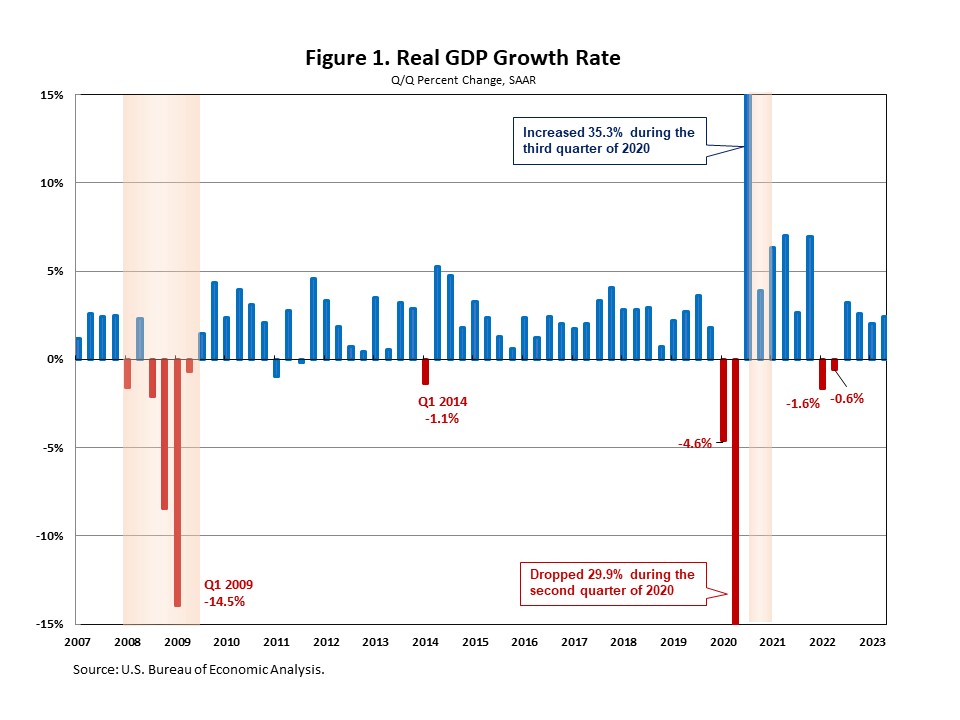The U.S. economy grew at a solid pace in the second quarter of 2023, fueled by consumer and government spending.
The second quarter data from the GDP report suggests that inflation is cooling. The GDP price index rose 2.2% for the second quarter, down from a 4.1% increase in the first quarter. It marks the slowest annual growth rate since the third quarter of 2020. The Personal Consumption Expenditures (PCE) price Index, capturing inflation (or deflation) across a wide range of consumer expenses and reflecting changes in consumer behavior, rose 2.6% in the second quarter, down from a 4.1% increase in the first quarter.
According to the “advance” estimate released by the Bureau of Economic Analysis (BEA), real gross domestic product (GDP) increased at an annual rate of 2.4% in the second quarter of 2023, following a 2% gain in the first quarter. This quarter’s growth was above NAHB’s forecast of a 1.4% increase.

This quarter’s increase reflected increases in consumer spending, nonresidential fixed investment, government spending, and private inventory investment, partially offset by decreases in exports and residential fixed investment. Imports, which are a subtraction in the calculation of GDP, decreased.
Consumer spending rose at an annual rate of 1.6% in the second quarter, reflecting increases in both services and goods. While expenditures on services increased 2.1% at an annual rate, goods spending increased 0.7% at an annual rate, led by gasoline and other energy goods (+13.1%).
Meanwhile, federal government spending increased 0.9% in the second quarter, while state and local government spending rose 3.6%, reflecting increases in compensation of state and local government employees and gross investment in structures.
Nonresidential fixed investment increased 7.7% in the second quarter, up from a 0.6% increase in the first quarter. The quarter’s increase in nonresidential fixed investment reflected increases in equipment (+10.8%), structures (+9.7%), and intellectual property products (+3.9%). Additionally, residential fixed investment (RFI) decreased 4.2% in the second quarter. This was the ninth consecutive quarter for which RFI subtracted from the headline growth rate for overall GDP. Within residential fixed investment, single-family structures rose 0.8% at an annual rate, multifamily structures rose 1.5% and other structures (specifically brokers’ commissions) decreased 8.9%.

Related


